This is one in a series of posts on the Sony alpha 7 R Mark IV (aka a7RIV). You should be able to find all the posts about that camera in the Category List on the right sidebar, below the Articles widget. There’s a drop-down menu there that you can use to get to all the posts in this series; just look for “A7RIV”.
I picked up my a7RIV this morning, after FedEx wouldn’t deliver it. The first think I did was some dark-field tests. So far, I have not taken the body cap off the camera, and I’ve still learned a lot, which I’ll share with you in this and the subsequent post.
I define engineering dynamic range (EDR) as full scale over the read noise. Some reserve the term for full scale over the mean value that produces a signal-to-noise ratio (SNR) of one, but that’s a lot harder to measure. Here is the EDR at base ISO and above for uncompressed raw format, single shot, using electronic first-curtain shutter (EFCS).
The switch to high conversion gain occurs at the transition from ISO 250 to ISO 320, as we saw before with the samples from a prototype a7RIV.
If we switch to electronic shutter, which Sony calls silent shutter, not much changes (I think I missed ISO 16000 in the sequence below):
Going back to EFCS and turning on compression costs us a tiny bit of DR at low ISOs:
Turning on the electronic shutter doesn’t change things (this time I got the ISO 16000 data point in):
If we plot the average of the four raw channels for EFCS with both uncompressed and compressed formats, we can see the difference, and how small it is:
Now let’s turn to EDR vs shutter speed. I made a series of exposures at varying shutter speeds at ISO 1000, using EFCS and uncompressed raw:
There’s a little wiggle at the transition from 0.7 seconds to 1 second. I’m not sure what that’s about. I looked at the spectra and there’s nothing obvious going on there. However, something dramatic happens at the transition from 3.2 seconds to 4 seconds. This looks like the Sony “star-eater” behavior, which is cause by their digital filtering of the raw image before writing it to the card. I’ll report on the spectra in the next post. Note that the jump is greatest for the blue channel. We’ll see why in the next post.
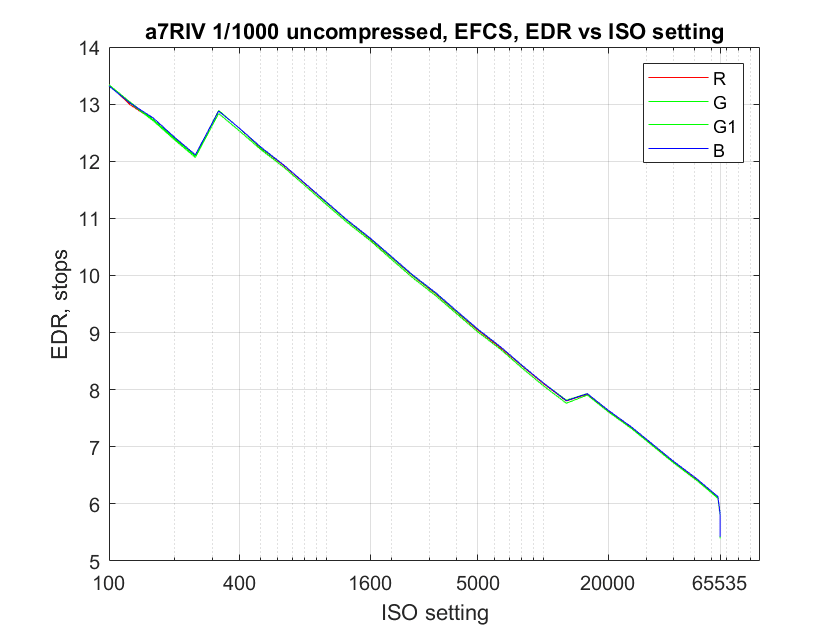
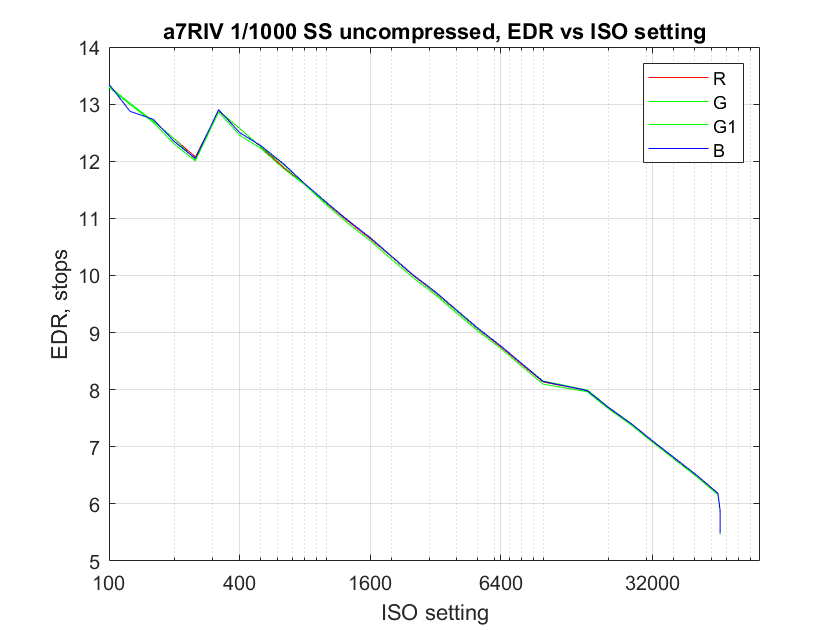
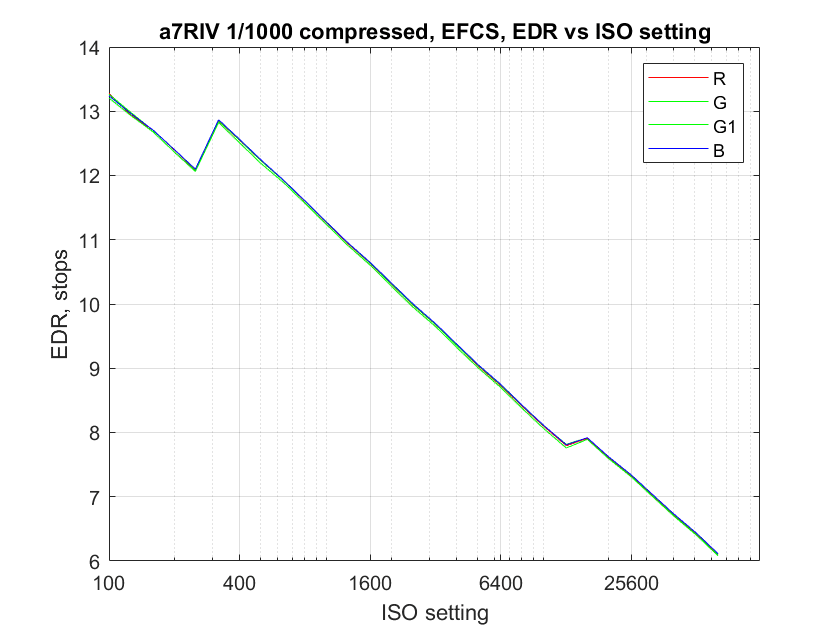
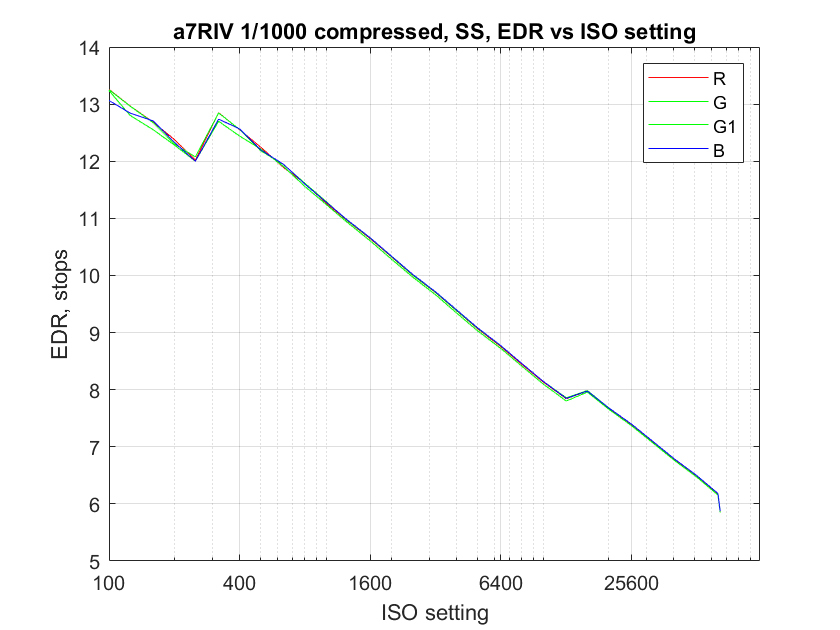
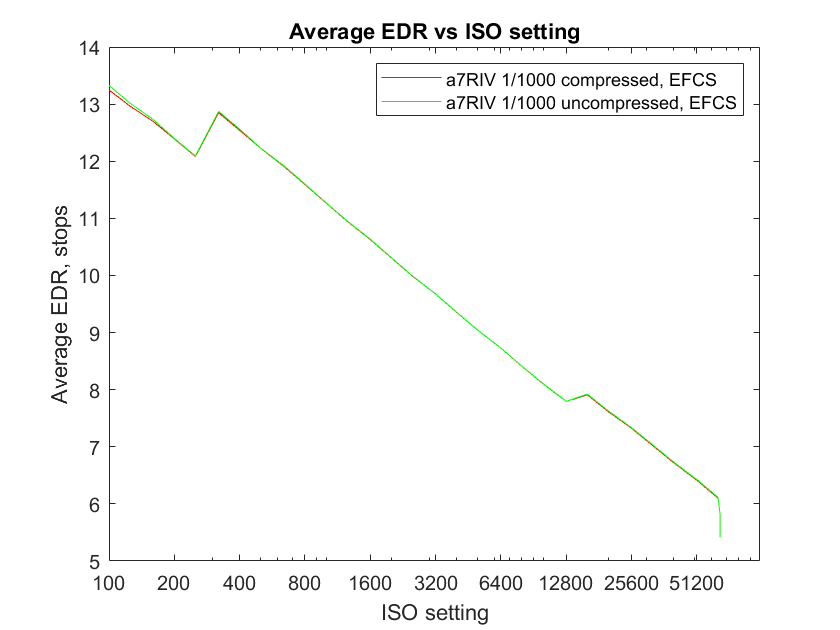
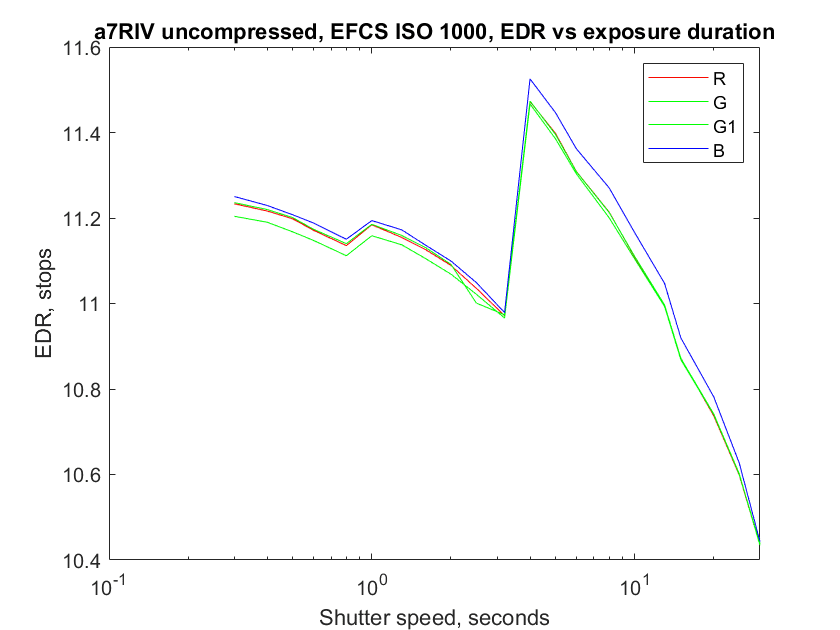
Calphate says
A7RIV doesn’t have this “boost mode” in A7III/A7RIII/XT3 which trade EDR for readout speed. They are still using 8-lane SLVS-EC which becomes a limiting factor. The sensor itself supports 16-lane mode. I guess we will only see its full potential when A7RV is announced.
Den says
I have seen some mentions that the electronic shutter is worse than the mk3 for still in terms of ‘jello’/rolling shutter. Would you be able to confirm if that’s the case?
Not that I’m much surprised given that the A9II is announced next month . Do you think the A9II may do away with the mechanical shutter completely?
JimK says
I’ll run a test and report the results in a post here.
JimK says
I’d be amazed if it did.
JimK says
It is true:
https://blog.kasson.com/a7riv/how-fast-is-the-sony-a7riv-silent-shutter/
david stock says
Thanks for your tests, Jim. Maybe I’m not understanding correctly, but it seems like the camera has more DR at ISO 320 than at ISO 200. And the increase in noise is moderate. Hmm. Is it fair to say that one should shoot either at ISO 100 or at ISO 320 up until ISO 1600?
JimK says
For the same exposure, that wouldn’t be a bad plan.
Den says
Jim, going back to the change by Sony of moving the high gain mode down to 320 – can you shed some light and why they might have done this and what the advantage is?
Thanks
JimK says
It provides better results at ISO 320, 400, and 500, and worse from there on up. Sony probably prioritized the lower ISO settings for this camera.